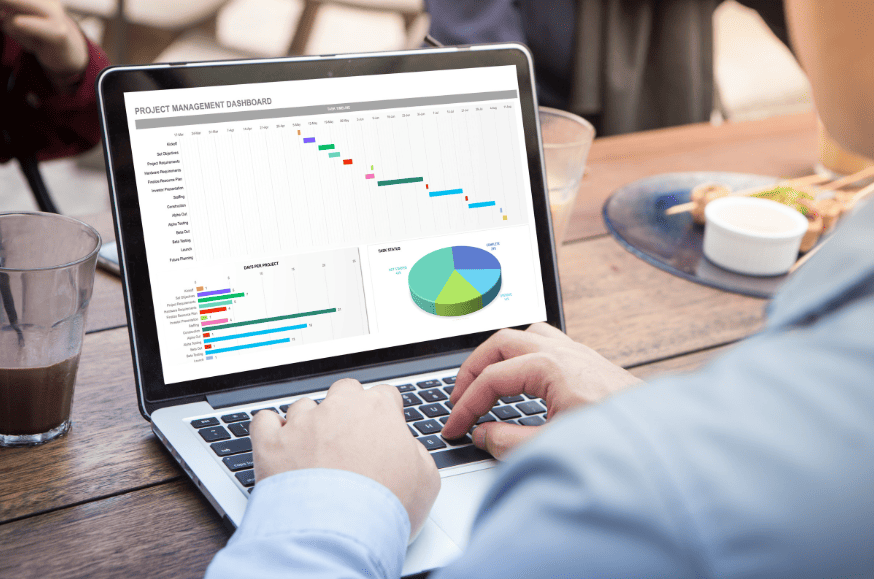As the go-to software for data analysis, project management, and business organization, having a strong command of Microsoft Excel can greatly boost your career prospects.
Table of Contents
It’s not just limited to finance or accounting professionals anymore, knowing how to use Excel effectively is a valuable skill in almost every industry. But don’t worry if you’re new to the game or feeling stuck in your current level of expertise, because with the right tips and tricks, you can learn to use Excel like a boss and take your career to new heights.
In this guide, we’ll cover some essential training tips that will help you excel (pun intended again) at using Microsoft Excel. From basic navigation to advanced functions and shortcuts.
We’ll equip you with the necessary skills to boost your career and impress your colleagues with your Excel prowess. So let’s dive in and learn how to become an Excel master. Let’s get started with some general tips that will set you on the path to success.
Learn the Basics – Discover the Fundamentals of Excel
Since its introduction in 1985, Microsoft Excel has become one of the most widely used and important software tools in the business world. Whether you’re a beginner or an experienced user, having a good understanding of Excel can greatly boost your career prospects.
In this section, we will cover some basic tips and techniques that are essential for any Excel user to know. These include navigating through the program, creating and formatting spreadsheets, and using basic formulas and functions to manipulate data.
Navigation
Before you can dive into using Excel to its full potential, it’s important to know how to navigate your way around the program. Excel has a familiar interface that is similar to other Microsoft Office programs.
The main elements include the ribbon, which contains all of the commands and tools, the work area where you can input data and create your spreadsheets, and the various tabs and groups within the ribbon that categorize the commands.
Excel also has a range of customizable options to help you personalize your experience. This includes changing the appearance of cells, columns, rows, and even the entire workbook. Familiarizing yourself with these navigation techniques will make your Excel experience smoother and more efficient.
Creating and Formatting Spreadsheets
Once you have a good understanding of how to navigate within Excel, it’s time to start creating and formatting spreadsheets. The first step is to input data into the cells by typing in values, numbers, or text. You can also import data from other sources such as databases or CSV files.
Excel has a range of formatting options to make your data visually appealing, including changing the font, color, and alignment.
In addition to basic formatting, you can also create charts and graphs within Excel to better represent your data. These visual aids can help you analyze and interpret your data more easily, making your work more efficient and effective.
Basic Formulas and Functions
One of the most powerful features of Excel is its ability to perform calculations and manipulate data using formulas and functions. Basic math operations such as addition, subtraction, multiplication, and division can be done easily within Excel by using simple formulas.
Excel also has a vast library of built-in functions that allow you to perform more complex calculations and analyses on your data. These include statistical functions, financial functions, date and time functions, and many more.
Make It Graphical – Add visual appeal with charts, graphs, and diagrams
One of the best ways to enhance your career is by leveraging Excel’s powerful visualization tools. Charts, graphs, and diagrams offer a visual representation of data, making it easier for others to understand and analyze complex information. In this section, we will explore some tips on how to effectively use these tools in Excel.
Choosing the right chart or graph
The first step in creating an effective visual representation of data is selecting the appropriate chart or graph type. Excel offers a wide range of options, including bar graphs, pie charts, line graphs, and more.
Each type has its own strengths and weaknesses, so it’s important to understand which one is best suited for your data. To help you make the right choice, here are some general guidelines:
- Use bar graphs to compare different categories or groups.
- Use pie charts to show the relationship of parts to a whole.
- Use line graphs to track changes over time.
- Use scatter plots to identify patterns or correlations between variables.
If you’re unsure which chart or graph type to use, Excel also has a recommended charts feature that suggests the most suitable option based on your data.
Automate Your Workflow – Use formulas and functions to speed up your results
Even when you think you’re an Excel pro, you can always improve your skills and boost your career by learning new tricks and techniques. One of the best ways to do this is by mastering formulas and functions.
Formulas are equations that perform calculations on values in a worksheet. They allow you to automate various tasks, from simple math operations to complex data analysis. On the other hand, functions are pre-built formulas that can be used to perform specific calculations in Excel.
Mastering both of these tools will help you save time and increase productivity. Here are some tips on how to effectively use formulas and functions in your daily tasks:
1. Use the “Insert Function” feature
Excel has a built-in function library with over 400 pre-built functions. Instead of trying to write complex formulas from scratch, you can use the “Insert Function” feature to search and select the appropriate function for your task. This will save you time and reduce errors.
2. Use relative and absolute cell references
When creating formulas, it’s important to understand the difference between relative and absolute cell references. Relative references adjust when copied or filled, while absolute references always refer to the same cell.
3. Utilize the IF function
The IF function is one of the most commonly used functions in Excel. It allows you to set conditions and perform different actions based on whether the condition is true or false. This can be extremely useful in automating tasks and making your worksheets more dynamic.
4. Use the CONCATENATE function to combine data
The CONCATENATE function allows you to combine text from different cells into one cell. This can be helpful when working with large amounts of data and trying to create a consistent format. For example, if you have first names in one column and last names in another, you can use CONCATENATE to combine them into a full name.
5. Learn and master array formulas
Array formulas perform calculations on multiple values in a single operation. They are powerful tools that can help you solve complex problems with ease.
Consider Attending Excel Training Courses
Lastly, a great way to boost your career is by attending Excel training courses. These courses can provide you with the necessary skills and knowledge to excel in your current role or impress potential employers in future job opportunities.
Also, excel training can help you stay up to date with the latest Excel features and techniques, making you a valuable asset in any workplace. That way, you can stay ahead of the curve and stand out among your colleagues.
Besides, attending Excel training courses can also help you gain new perspectives and strategies to enhance your productivity. You will learn how to use shortcuts, functions, and formulas to efficiently complete tasks that may have previously taken up much of your time.
Plus, these courses often cover advanced topics such as data analysis, automation, and visualization, which are crucial skills in today’s job market. Moreover, Excel training courses can provide you with a recognized certification that can be added to your resume.
This certification will validate your proficiency in Excel and make you more desirable to potential employers. It also shows your dedication to continuous learning and improvement, which is highly valued in any professional setting.
In the end, boosting your career is not a one-time event. It requires continuous learning and development of skills, especially in today’s fast-paced and ever-changing work environment.
For those looking to further enhance their career in human resources, pursuing a Graduate Certificate in Human Resource Management at UNSW can provide you with the advanced knowledge and skills needed to excel in this dynamic field.
One way to ensure that you stay ahead of the game is by constantly upgrading your skills through Excel training. Excel has become an essential tool for businesses across various industries.
From finance to marketing to human resources, proficiency in Excel can significantly enhance your job performance and open up new career opportunities. It is a vital skill to have in today’s digital age, where data analysis and management are crucial for making informed business decisions.
FAQs On How to Boost Your Career With Excel Training
1. Why is Excel training important if you want to boost your career?
Excel is a widely used software in many industries and mastering it can greatly enhance your job opportunities. With advanced Excel skills, you can handle complex data analysis, create professional reports, and improve overall efficiency in the workplace.
2. How can Excel training help you stand out in the job market?
Many job roles now require advanced Excel skills, and having a certification or extensive training in Excel can make you a desirable candidate for these positions. Additionally, showcasing your proficiency in Excel on your resume can demonstrate your analytical and problem-solving abilities to potential employers.
3. What are some specific tips for excelling in Excel training?
It’s important to have a clear understanding of the basic functions and formulas of Excel before moving on to advanced features. Practice regularly, explore different templates and resources available online, and consider enrolling in a structured training program for more comprehensive learning.
4. Can Excel training benefit your career even if you’re not working in a data-driven field?
Absolutely. Excel is a versatile tool that can be useful in various job roles, from marketing to finance to project management. Even if your job doesn’t involve extensive data analysis, having solid Excel skills can still make you more efficient and effective in your tasks, leading to potential career advancements.



